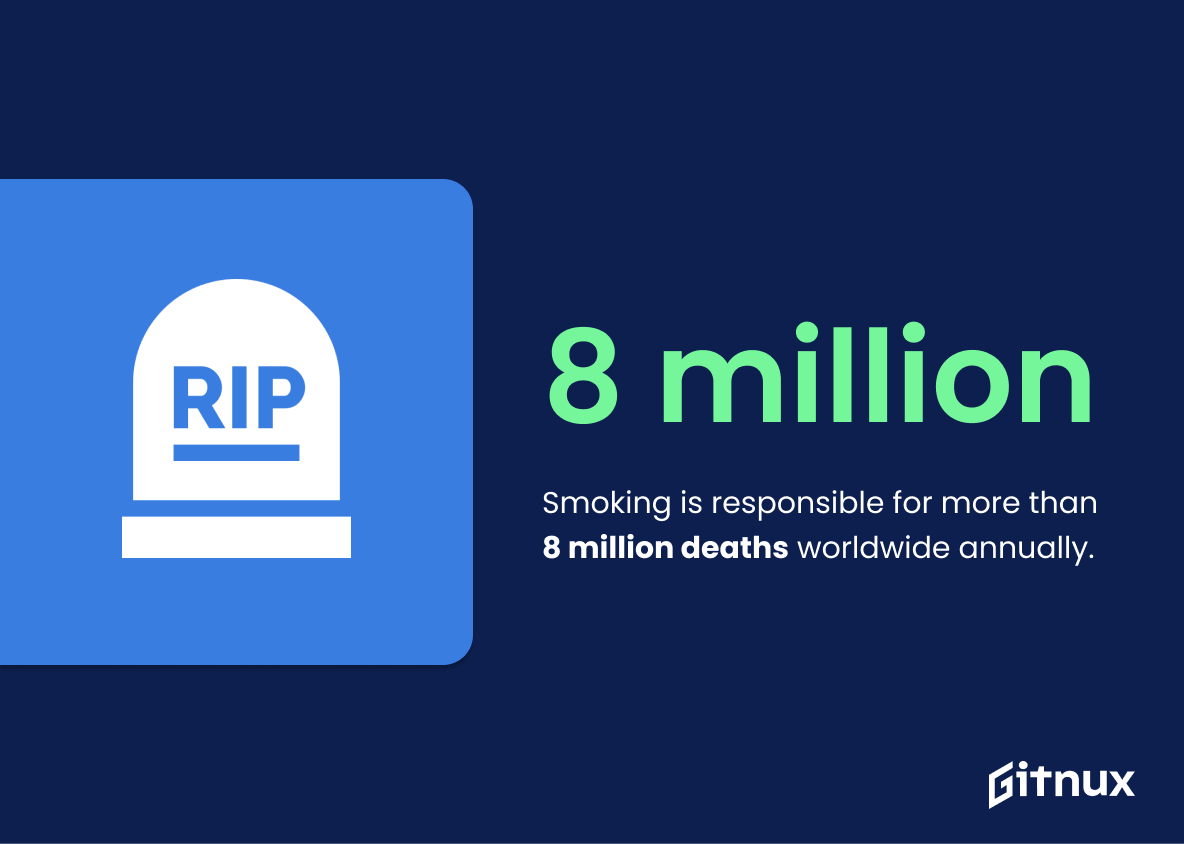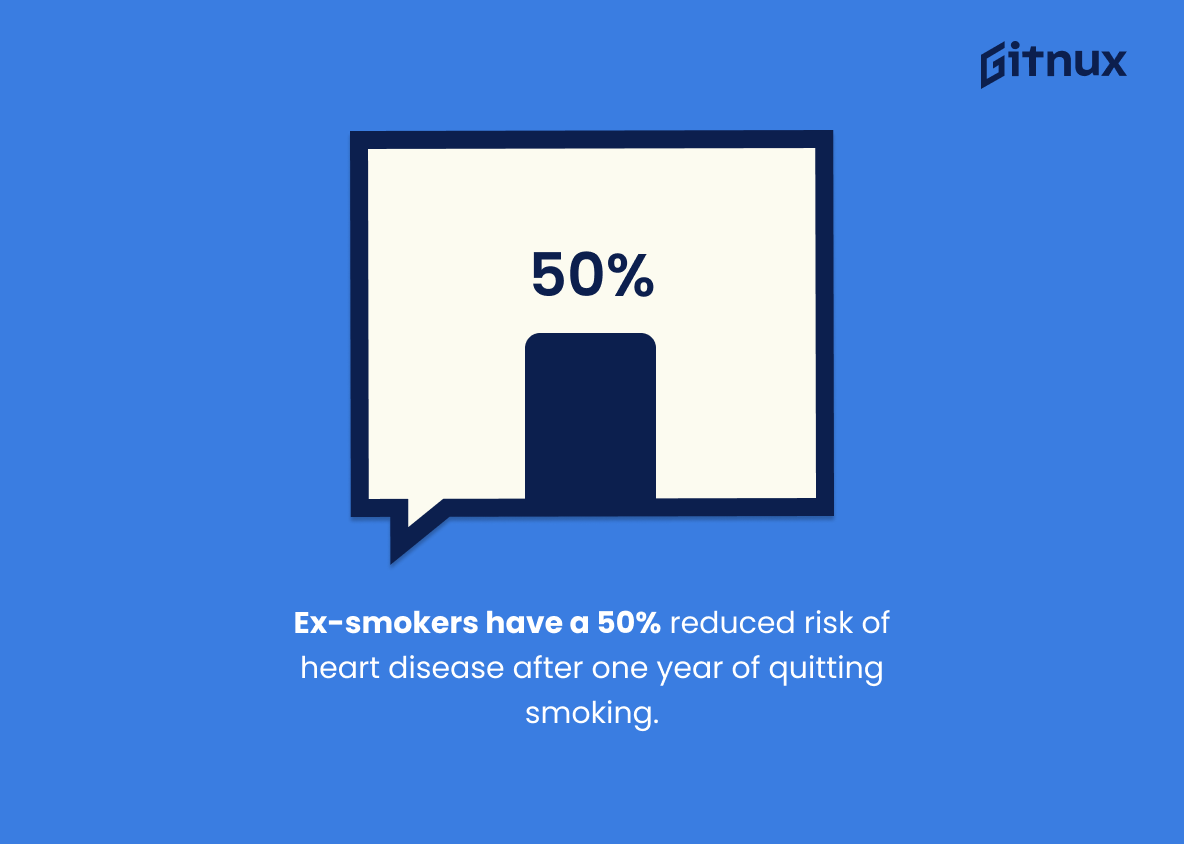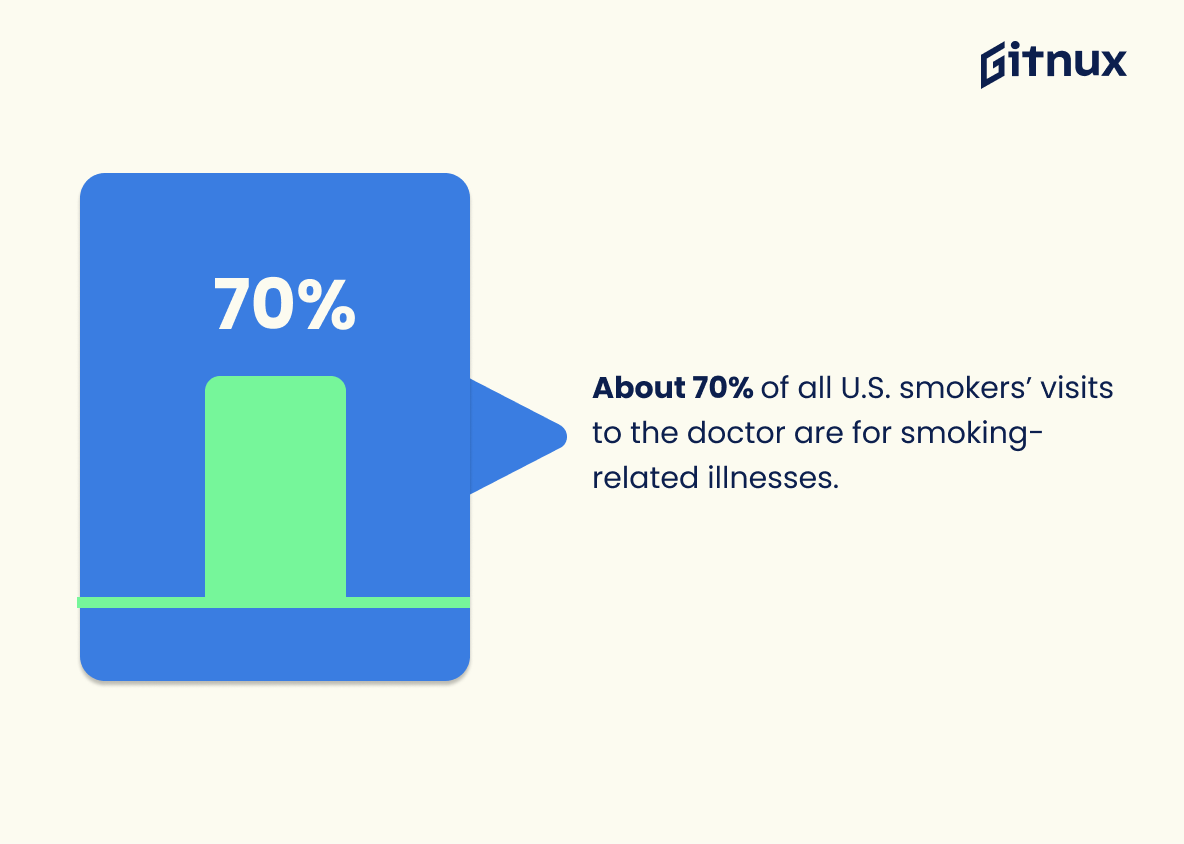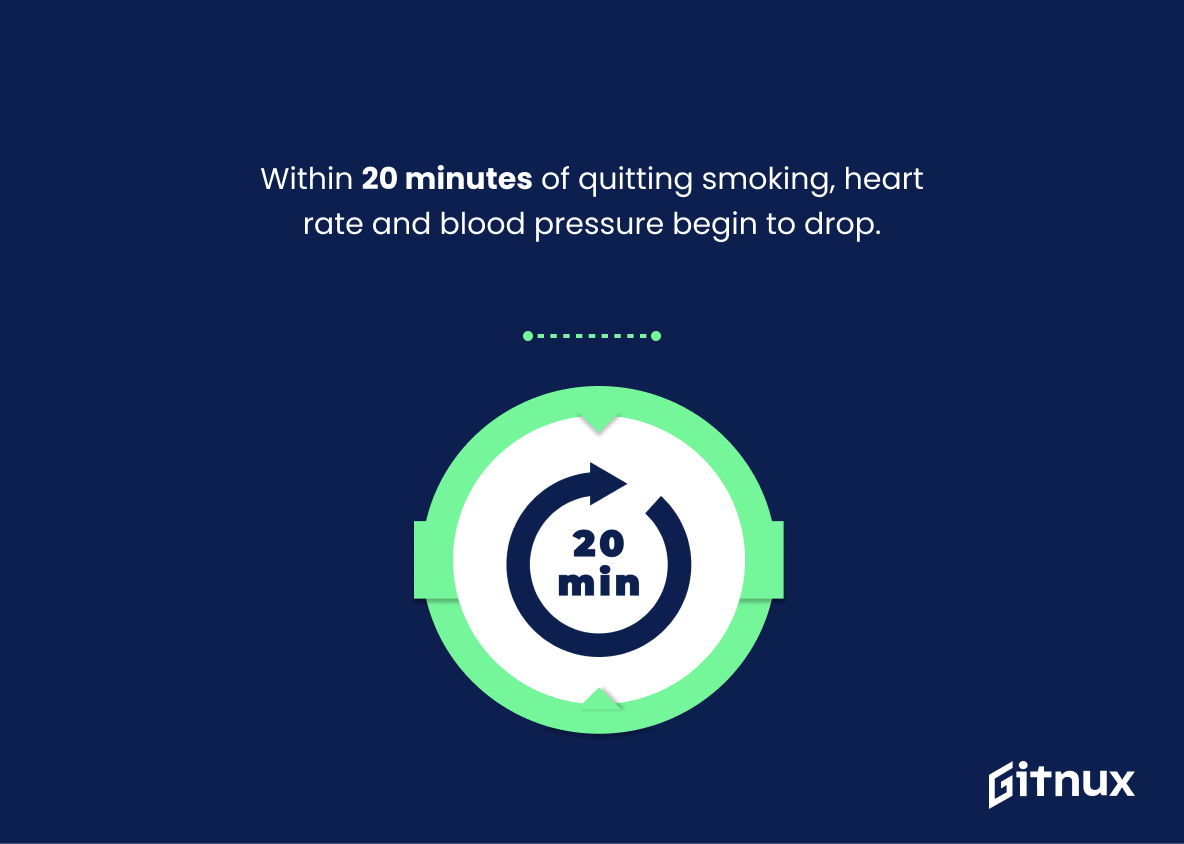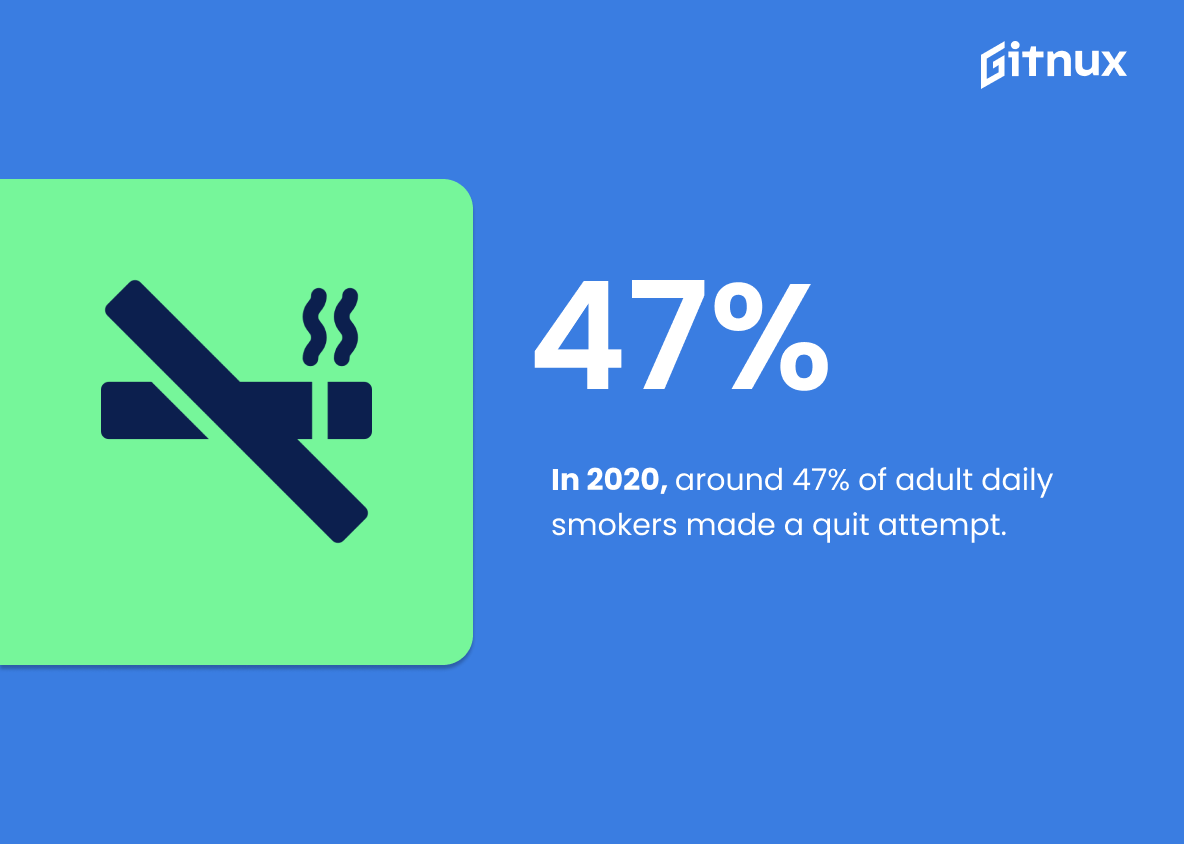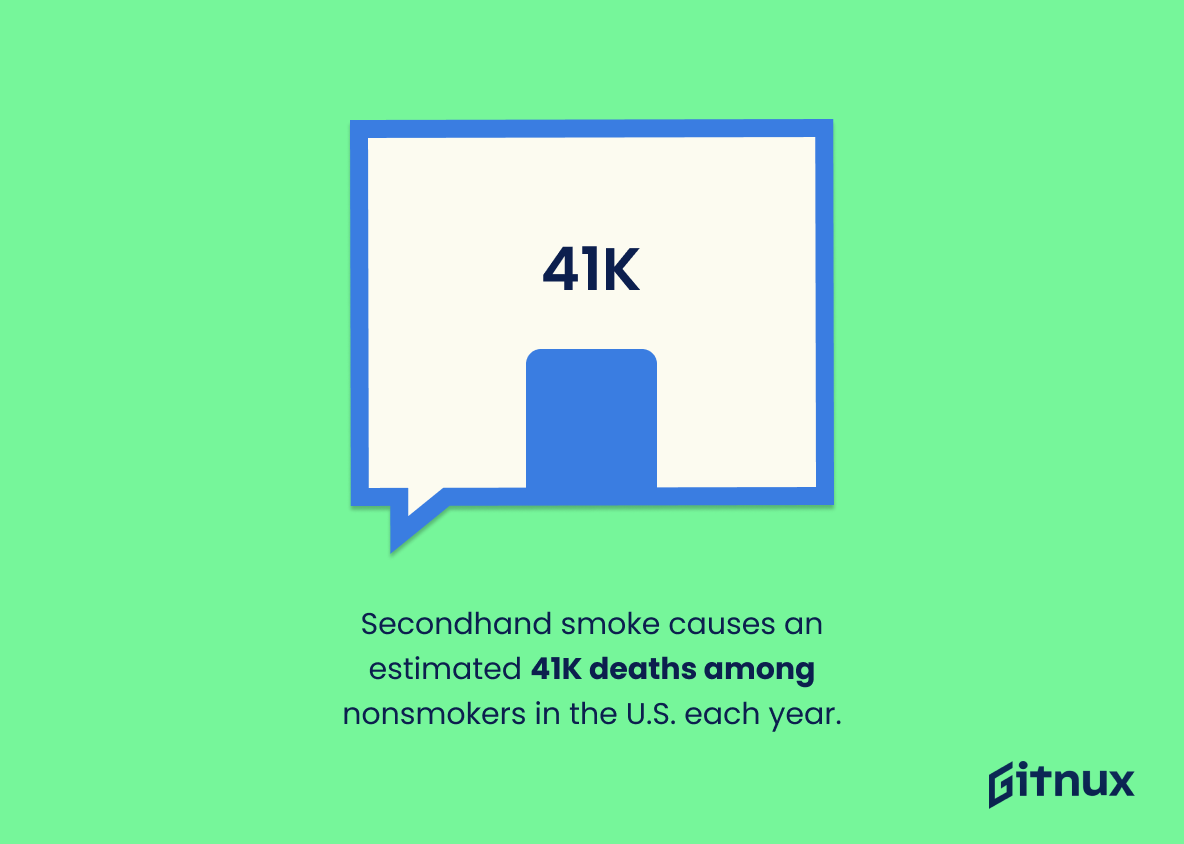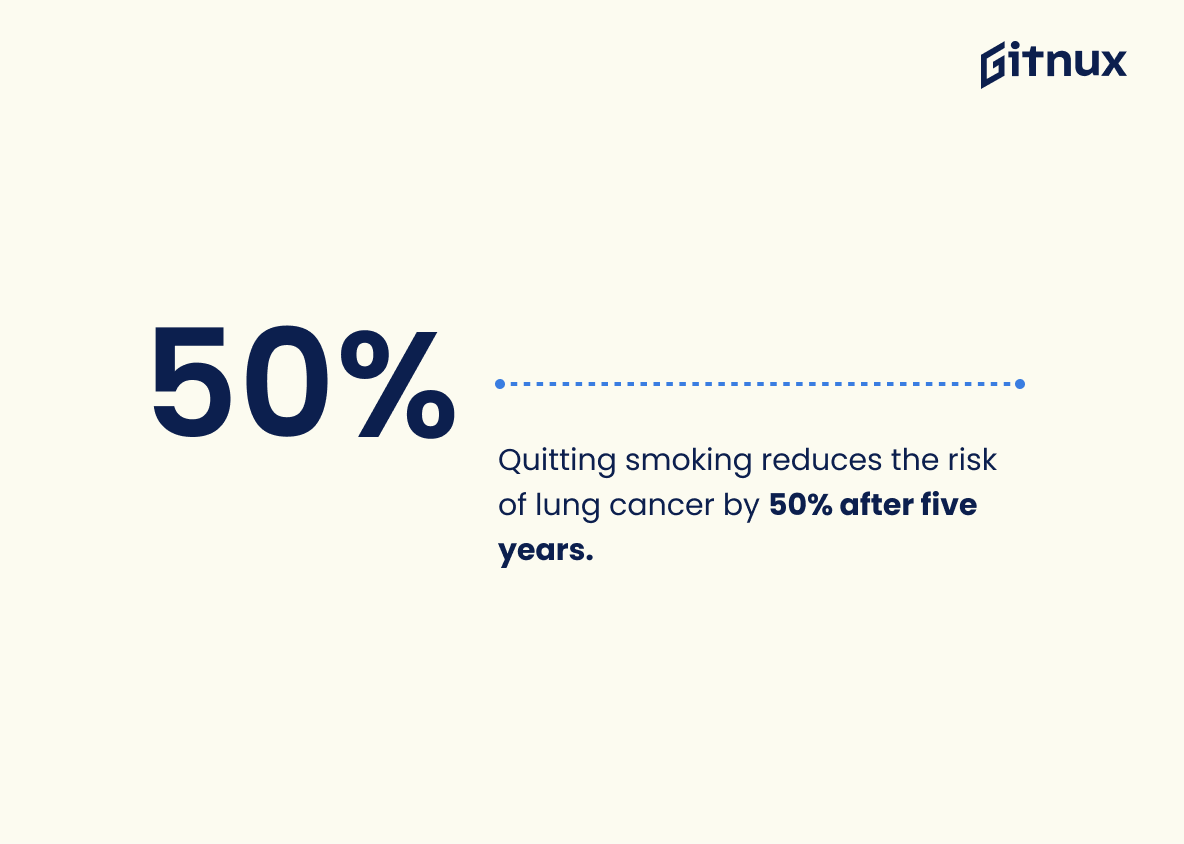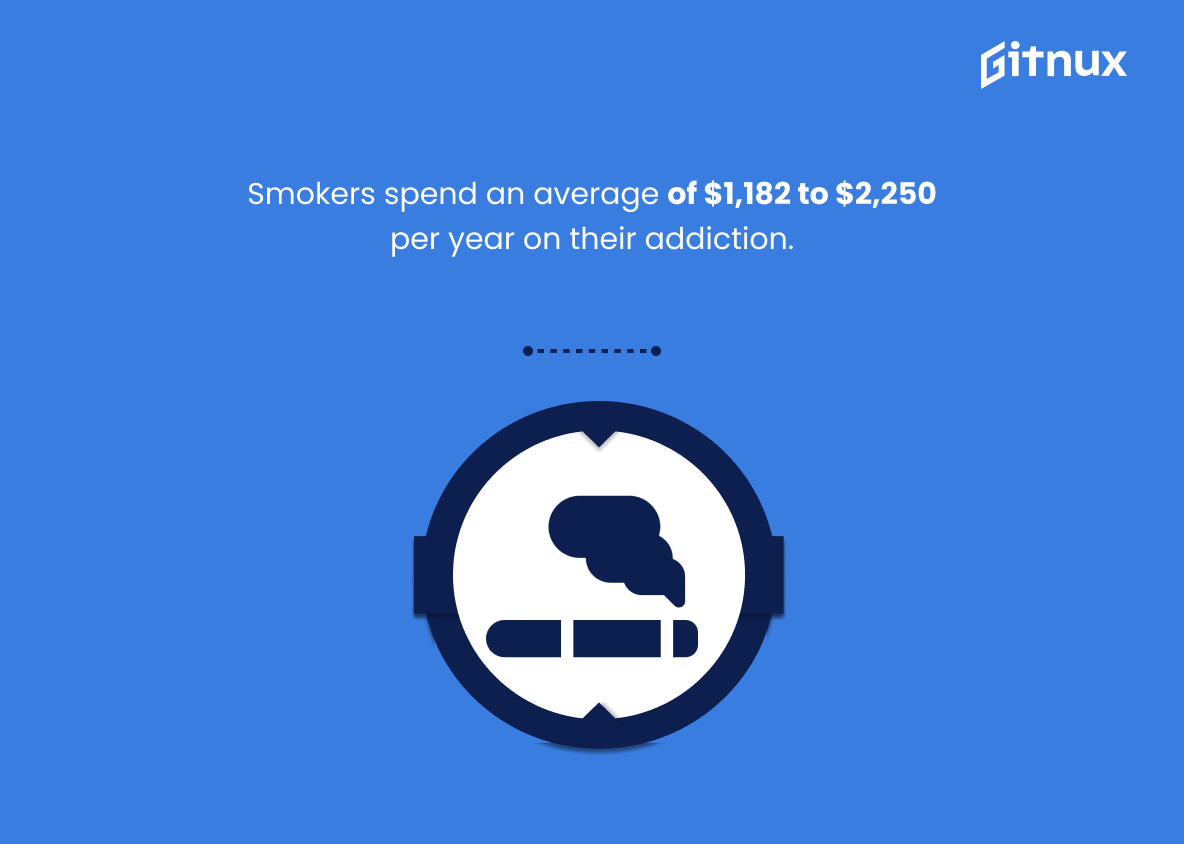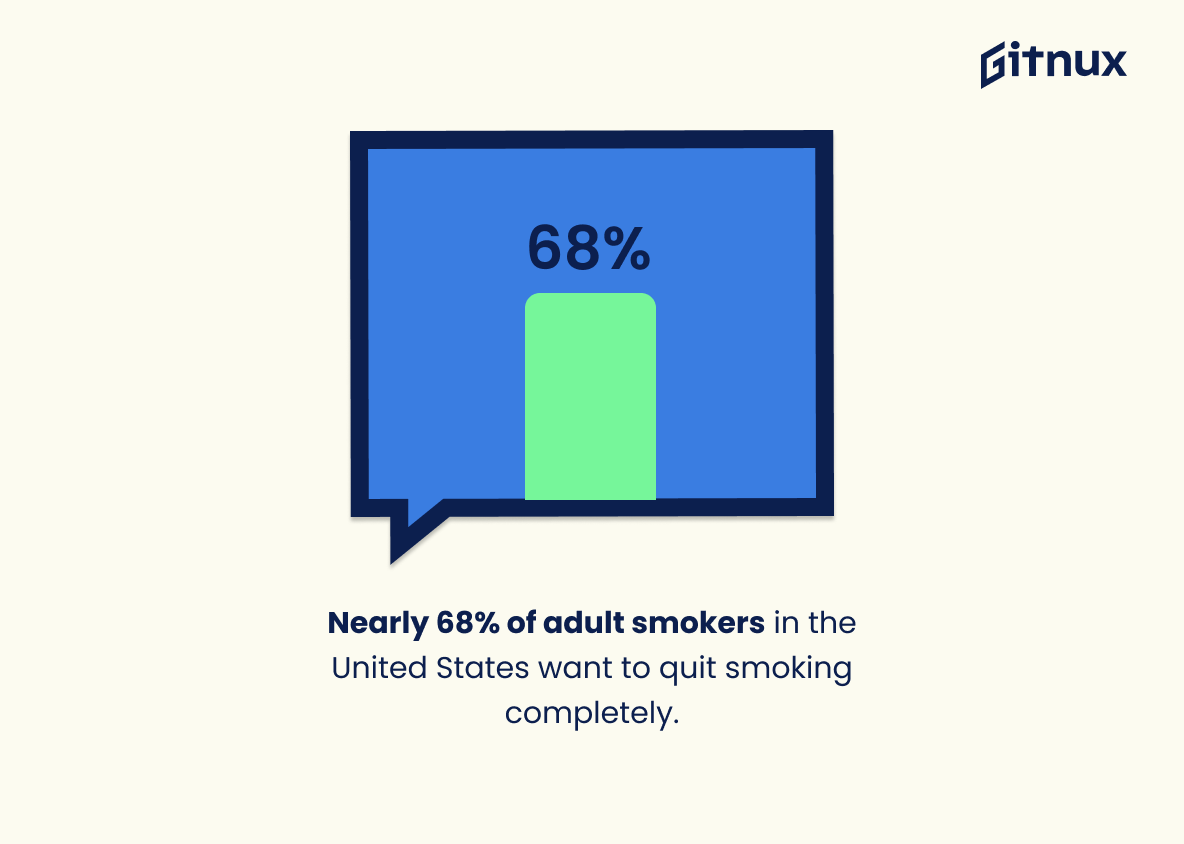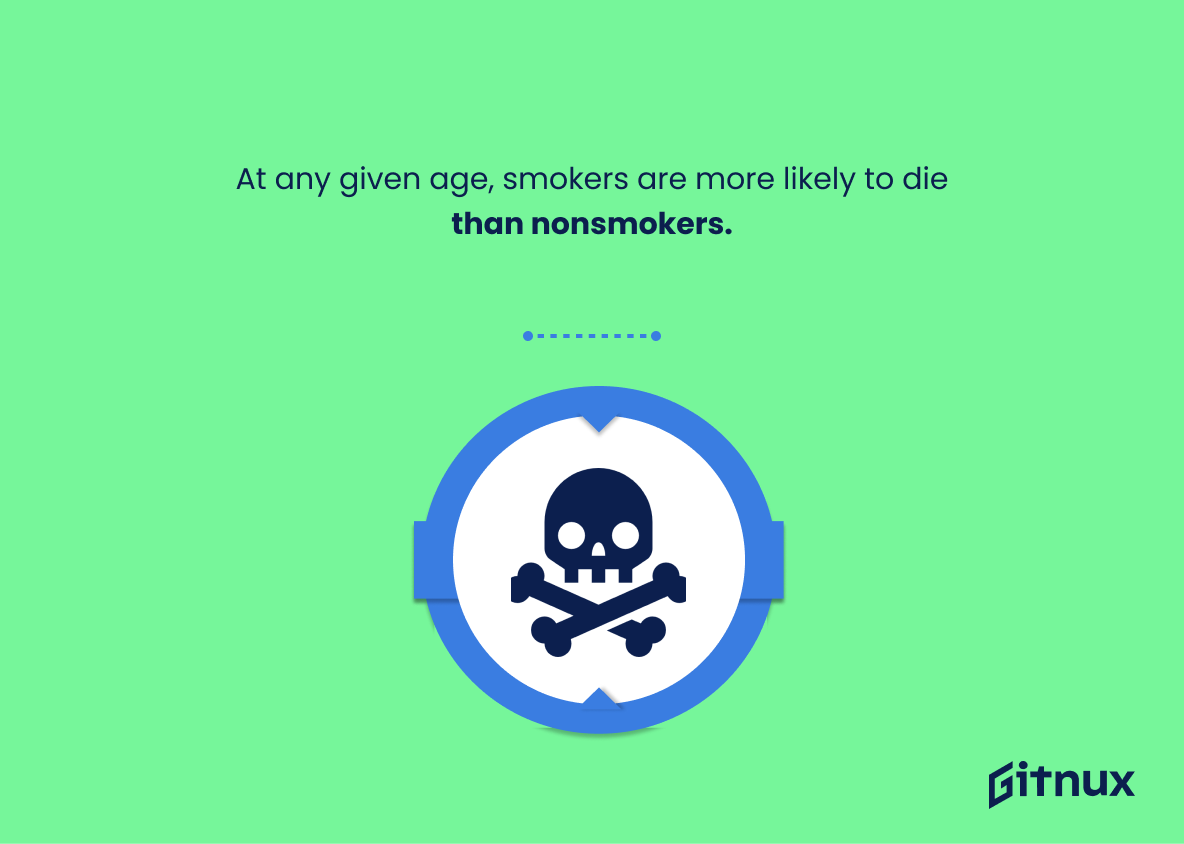Quitting smoking is a difficult but rewarding journey. It can be hard to stay motivated when you don’t know the facts about how quitting will benefit your health and life in general. To help, here are 20 quit-smoking statistics that demonstrate why it’s worth taking the plunge:
This statistic serves as a stark reminder of the dangers of smoking and the importance of quitting. It highlights the fact that smoking can have a devastating impact on one’s life expectancy, and that quitting can be a life-saving decision. It is a powerful statistic that can be used to motivate people to quit smoking and to encourage them to make healthier lifestyle choices.
Approximately 70% of smokers express a desire to quit smoking.
This statistic is a powerful reminder of the prevalence of smoking and the need for more resources to help people quit. It shows that the majority of smokers are aware of the risks associated with smoking and are actively trying to quit, but may need additional support to do so. This statistic is an important part of the conversation about quitting smoking and can help to inform public health initiatives and policies.
Quit Smoking Statistics Overview
Smoking is responsible for more than 8 million deaths worldwide annually.
This statistic is a stark reminder of the devastating impact that smoking has on the global population. It serves as a powerful reminder of the importance of quitting smoking and the need to spread awareness of the dangers of smoking. It is a call to action for individuals to take responsibility for their health and the health of those around them.
Ex-smokers have a 50% reduced risk of heart disease after one year of quitting smoking.
This statistic is a powerful reminder of the positive impact that quitting smoking can have on one’s health. After just one year of abstaining from smoking, ex-smokers have a 50% reduced risk of heart disease, demonstrating the immediate and long-term benefits of quitting. This statistic serves as a powerful motivator for those considering quitting, and is an important reminder of the importance of quitting smoking for good.
In the United States, around 480,000 deaths occur annually due to smoking-related diseases.
This statistic serves as a stark reminder of the devastating effects of smoking on human health. It highlights the urgent need for people to quit smoking and to take preventive measures to protect themselves from the harmful effects of smoking. It is a powerful reminder of the importance of quitting smoking and the need to spread awareness about the dangers of smoking.
About 70% of all U.S. smokers’ visits to the doctor are for smoking-related illnesses.
This statistic serves as a stark reminder of the dangers of smoking and the importance of quitting. It highlights the fact that smoking can have serious health consequences, and that the majority of smokers are suffering from illnesses related to their habit. This statistic is a powerful reminder of the need to quit smoking and the importance of taking steps to protect one’s health.
Within 20 minutes of quitting smoking, heart rate and blood pressure begin to drop.
This statistic is a powerful reminder of the immediate benefits of quitting smoking. Within a mere 20 minutes, the body begins to reap the rewards of a smoke-free lifestyle. This is a powerful motivator for those looking to quit, as it shows that the positive effects of quitting start almost immediately.
In 2020, around 47% of adult daily smokers made a quit attempt.
This statistic is a powerful reminder of the importance of quitting smoking. It shows that even in the midst of a global pandemic, many smokers are still taking the initiative to try and quit. This statistic is a testament to the strength of the human spirit and the determination of those who are trying to make a positive change in their lives. It also serves as a reminder that quitting smoking is possible and that there are resources available to help those who are trying to quit.
Secondhand smoke causes an estimated 41,000 deaths among nonsmokers in the United States each year.
This statistic serves as a stark reminder of the devastating effects of secondhand smoke on the health of nonsmokers. It highlights the importance of quitting smoking and avoiding secondhand smoke in order to protect the health of those around us.
Quitting smoking reduces the risk of lung cancer by 50% after five years.
This statistic is a powerful reminder of the importance of quitting smoking. After five years, the risk of lung cancer is cut in half, showing that the decision to quit smoking can have a significant impact on one’s health. This statistic is an important piece of information for anyone considering quitting smoking, as it demonstrates the tangible benefits that can be achieved.
The success rate of quitting smoking without assistance is approximately 4%.
This statistic serves as a stark reminder of the difficulty of quitting smoking without assistance. It highlights the importance of seeking help when attempting to quit smoking, as the success rate is significantly higher when assistance is sought.
Smokers spend an average of $1,182 to $2,250 per year on their addiction.
This statistic serves as a stark reminder of the financial burden that smoking can impose on individuals. It highlights the fact that smoking can be an expensive habit, with smokers spending hundreds of dollars each year on their addiction. This information can be used to encourage smokers to quit, as it demonstrates the potential savings that can be made by quitting.
Smoking costs the United States over $300 billion per year.
This statistic is a stark reminder of the immense financial burden that smoking places on the United States. It is a powerful illustration of the economic impact of smoking, and serves as a reminder of the importance of quitting smoking in order to reduce this burden.
Nearly 68% of adult smokers in the United States want to quit smoking completely.
This statistic is a powerful reminder of the prevalence of smoking in the United States and the desire of many smokers to quit. It speaks to the need for more resources and support for those looking to quit, and it serves as a call to action for those who are in a position to help.
Amongst former smokers, 62.7% have quit for 10+ years.
This statistic is a testament to the power of quitting smoking. It shows that, even after a decade, former smokers have been able to stay away from cigarettes and maintain their commitment to a healthier lifestyle. This statistic is a reminder that quitting smoking is possible and that it can have long-term benefits. It is an encouraging sign for those who are considering quitting and a reminder that quitting can lead to a healthier life.
The use of pharmacotherapy can increase the chances of successfully quitting smoking by up to three times.
This statistic is a powerful reminder of the potential of pharmacotherapy in helping people quit smoking. It highlights the fact that, with the right support, individuals can significantly increase their chances of successfully quitting smoking. This is an encouraging statistic for those looking to quit, and serves as a reminder that quitting smoking is possible with the right help.
At any given age, smokers are more likely to die than nonsmokers.
This statistic serves as a stark reminder of the dangers of smoking and the importance of quitting. It highlights the fact that smoking can have a significant impact on one’s life expectancy, and that quitting can be a life-saving decision. It is a powerful reminder that smoking is not a harmless habit, and that it can have serious consequences.
Every day, around 2,000 young people under 18 years old smoke their first cigarette in the United States.
This statistic serves as a stark reminder of the prevalence of smoking among young people in the United States. It highlights the need for more education and awareness about the dangers of smoking, as well as the importance of providing resources and support to those who are trying to quit.
Conclusion
The statistics presented in this blog post demonstrate the devastating effects of smoking on both individuals and society. Smoking is responsible for an estimated 8 million deaths worldwide annually, as well as 480,000 deaths in the United States alone. It also increases a person’s risk of developing heart disease by 50%, reduces life expectancy by 10 years, and costs over $300 billion per year to society. Quitting smoking can reduce these risks significantly; however, it is not easy without assistance or support from friends and family members. The good news is that there are many resources available to help smokers quit successfully – pharmacotherapy being one such option which has been proven to increase success rates up threefold compared with quitting unaided. Ultimately, if you’re considering quitting smoking then now could be the perfect time.
References
0. – https://www.futuremedicine.com
1. – https://www.who.int
2. – https://www.uspreventiveservicestaskforce.org
3. – https://www.lung.org
4. – https://www.pewtrusts.org
5. – https://www.heart.org
6. – https://www.ncbi.nlm.nih.gov
7. – https://www.cdc.gov
